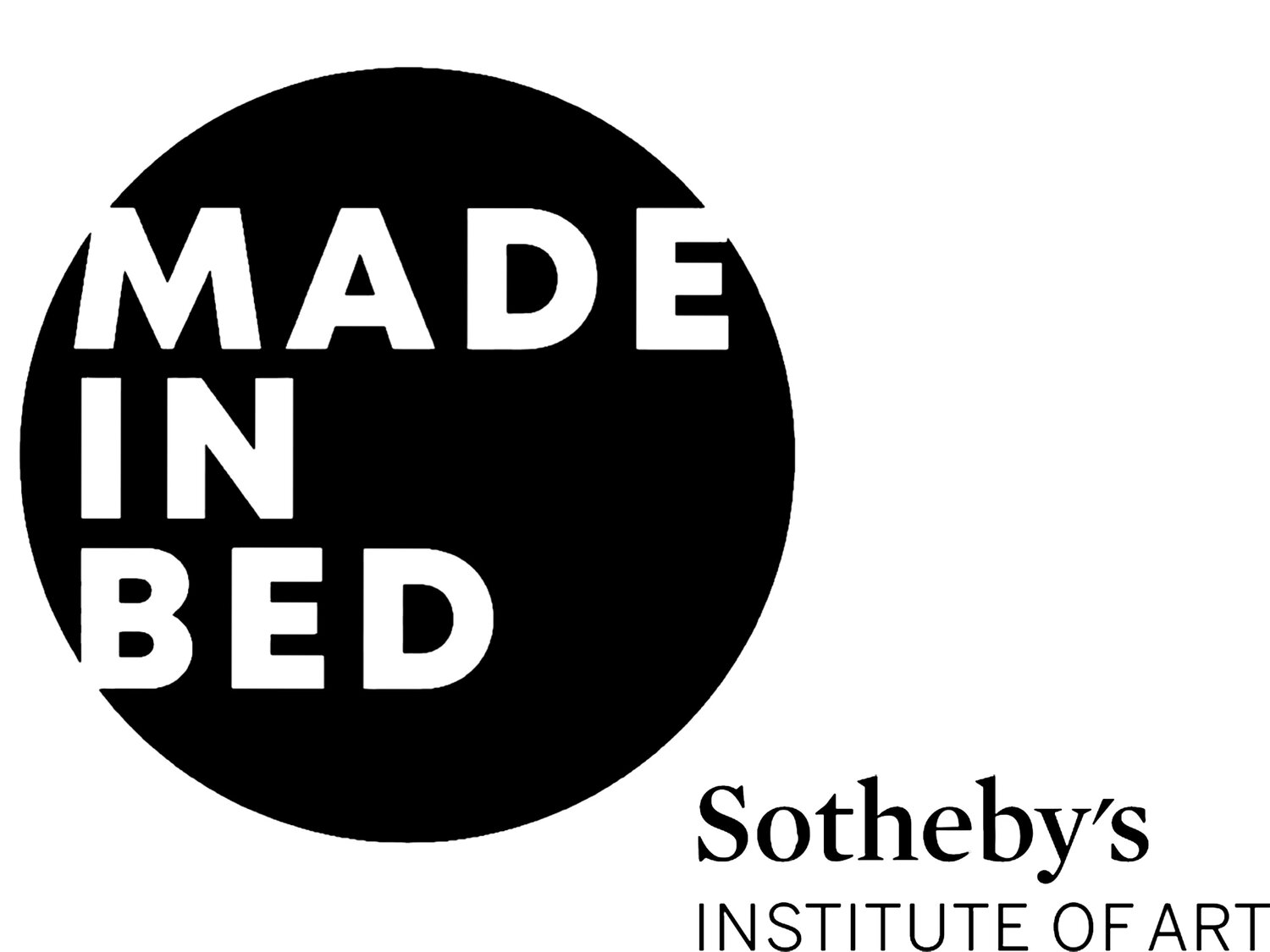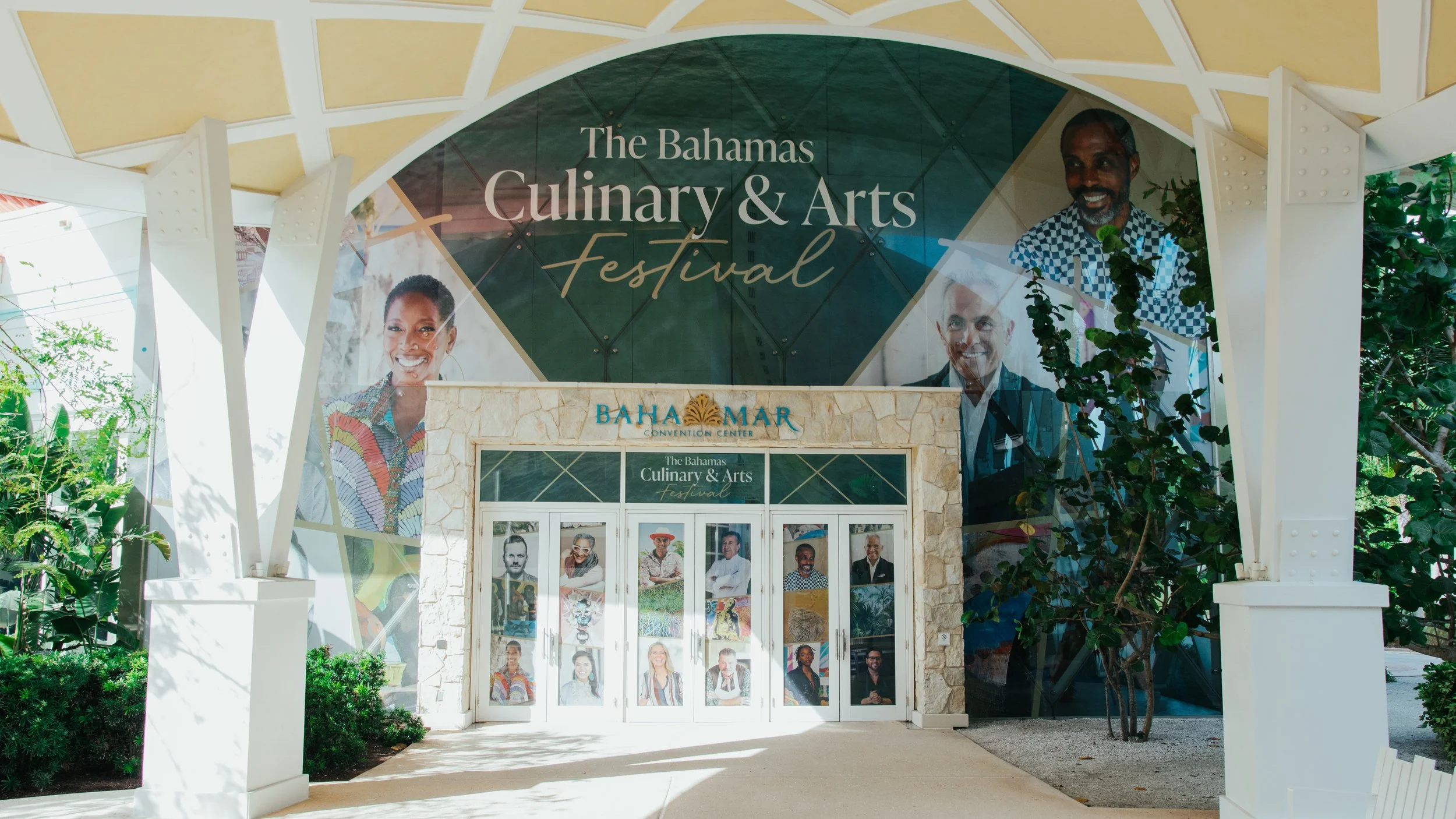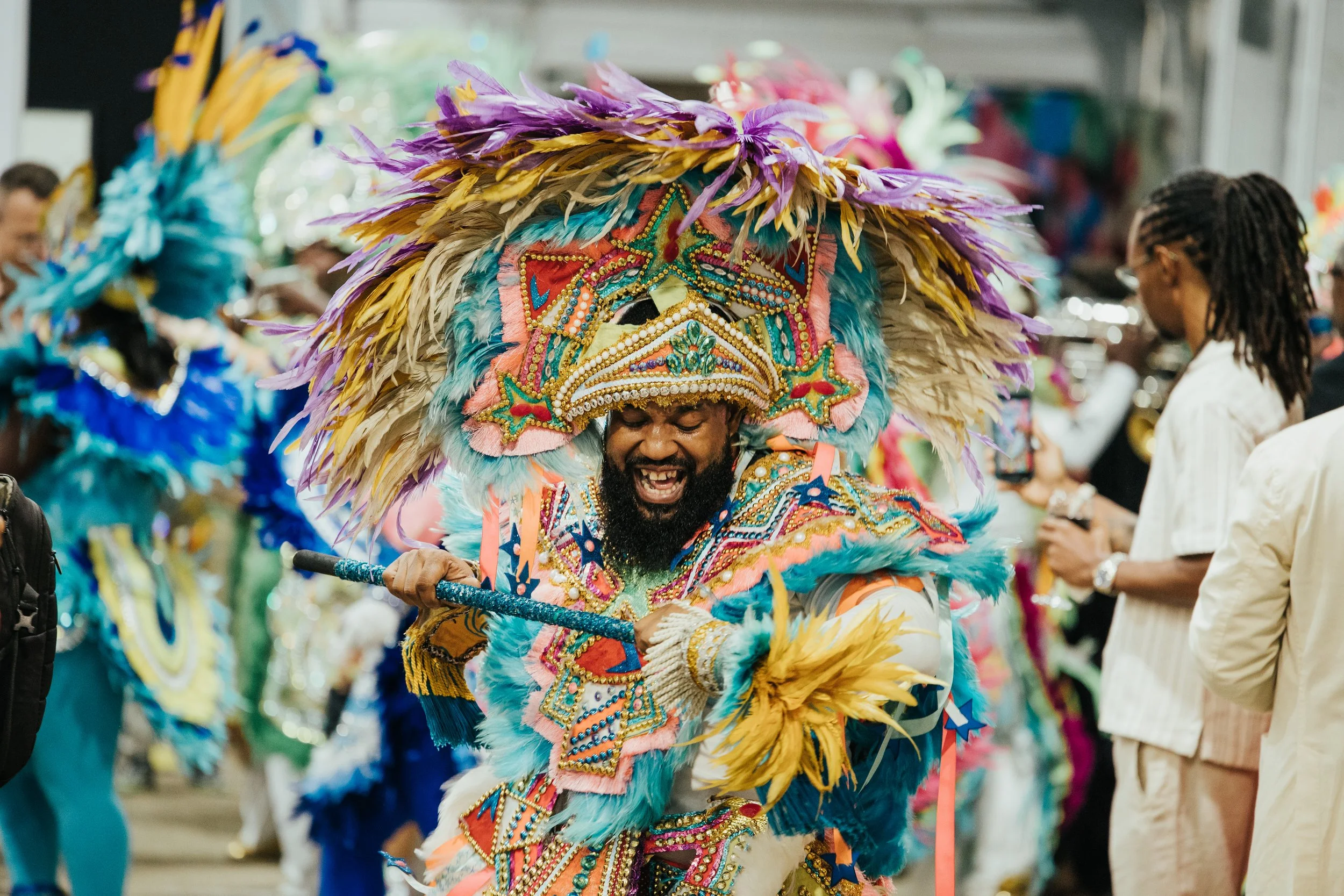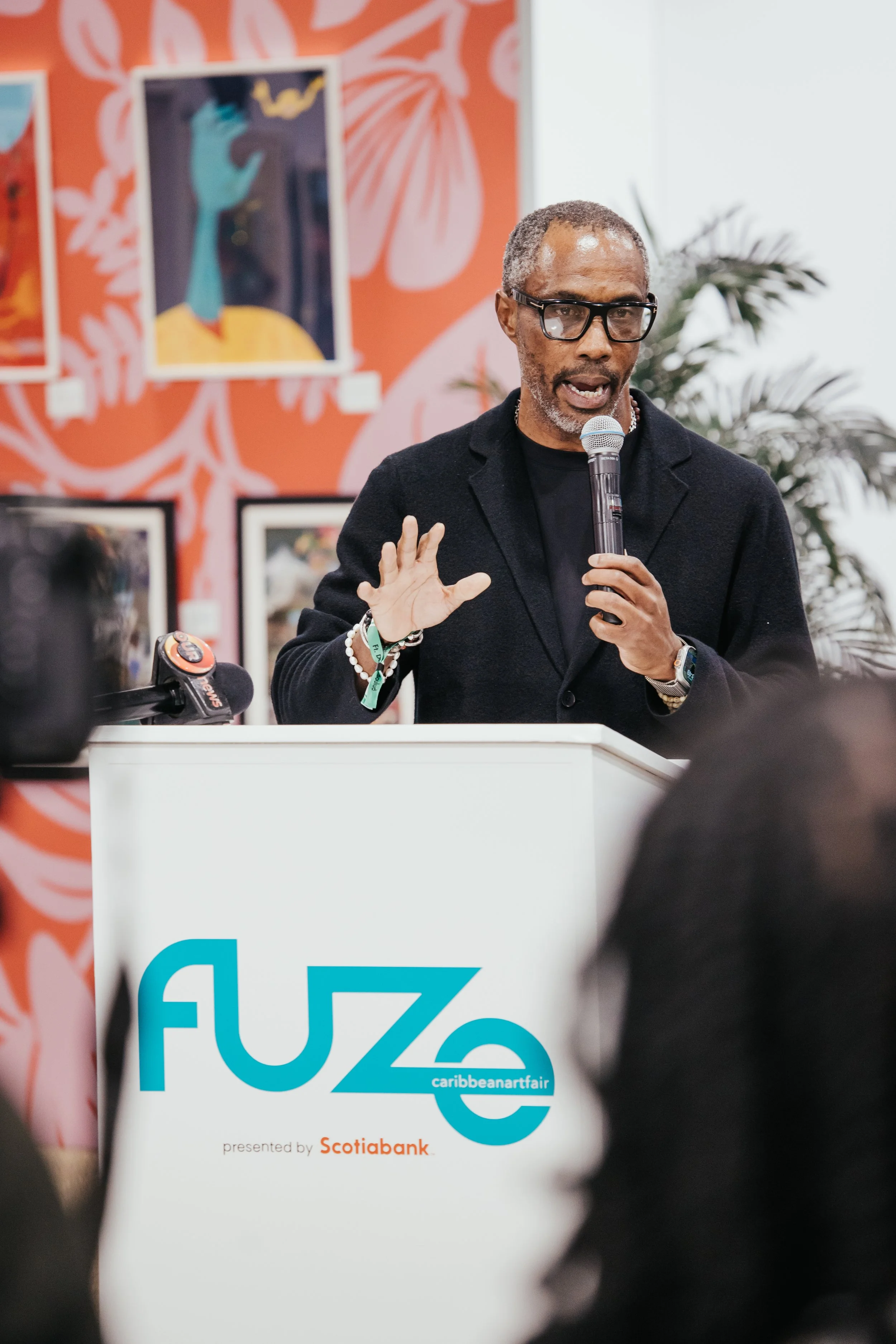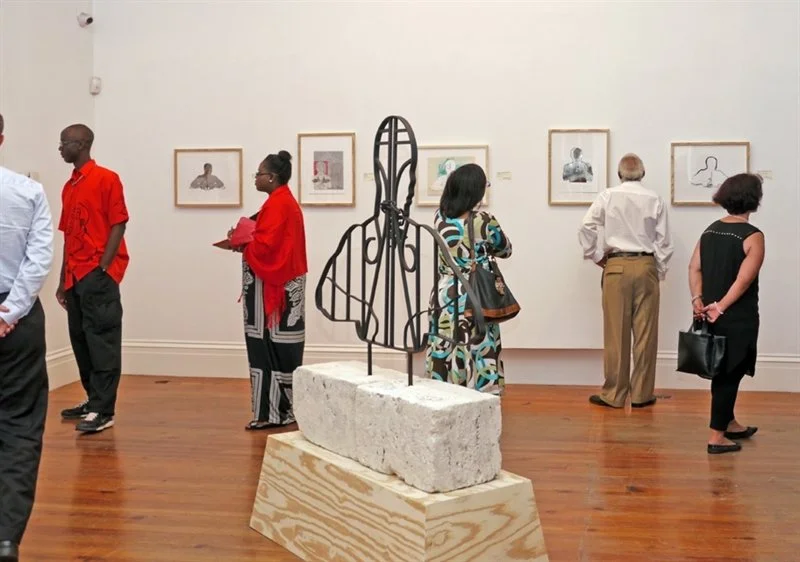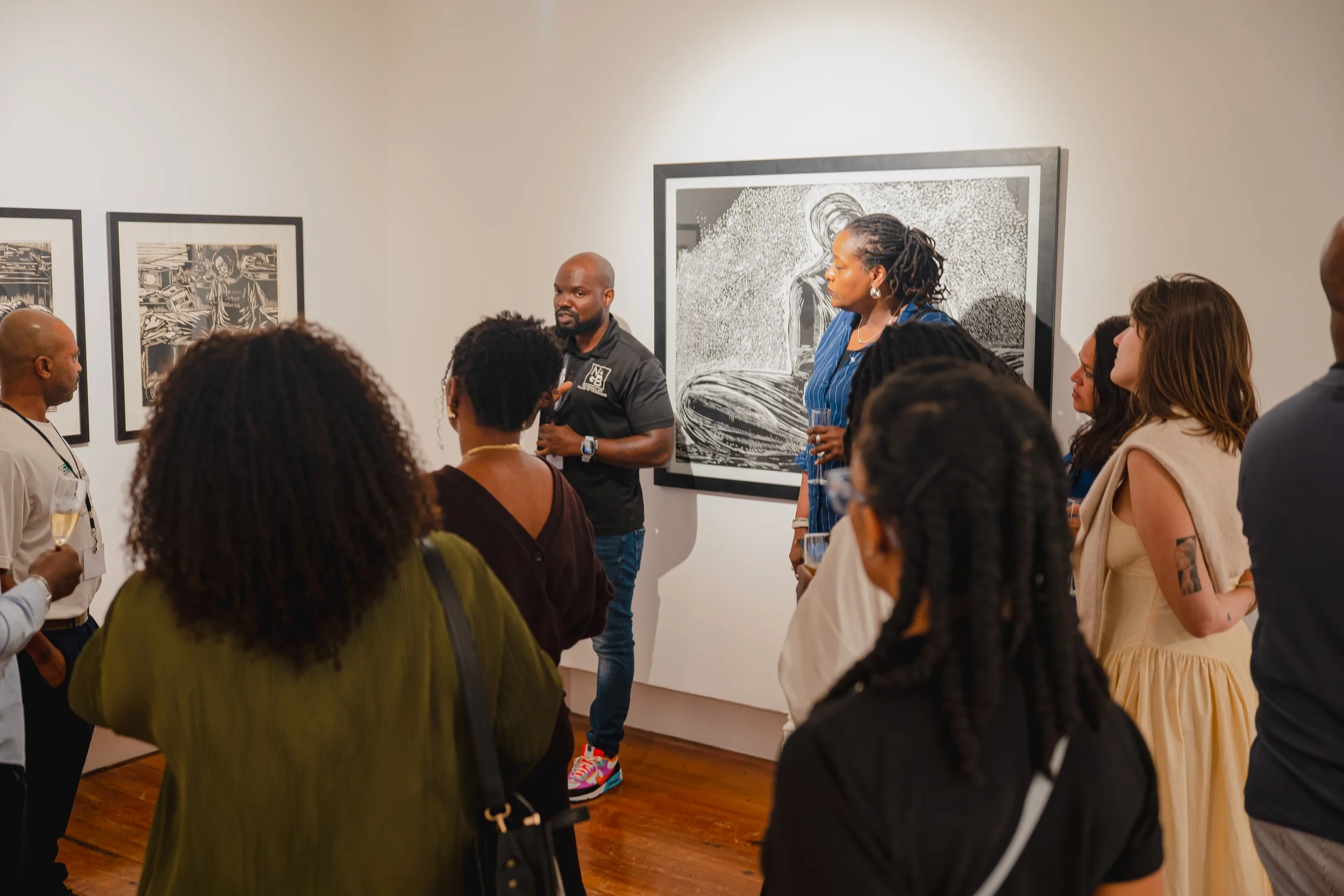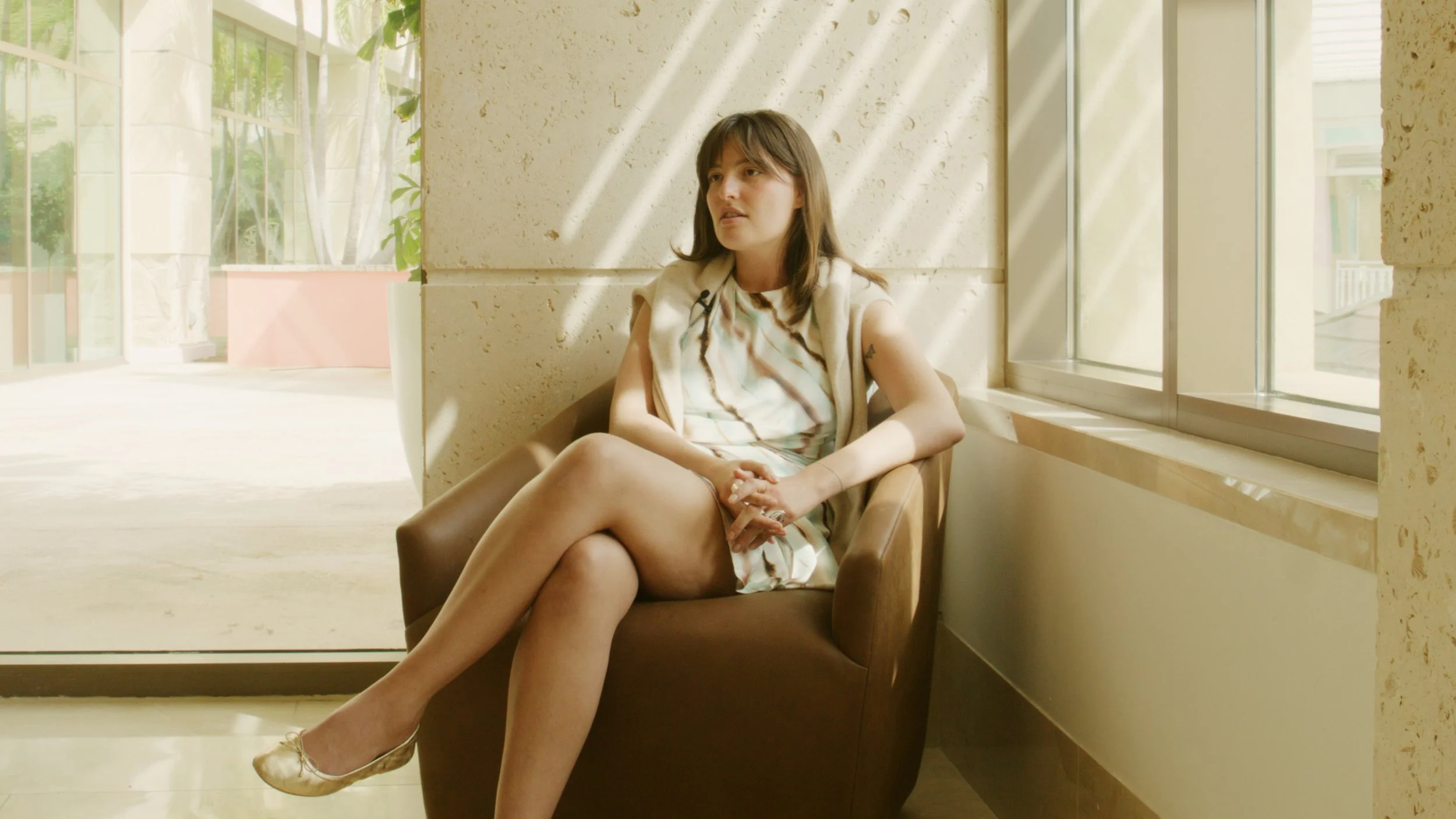Cultivating Community: Hayley River Smith on Art Fairs as Ecosystems
While Frieze and its satellite fairs consumed London this October, across the Atlantic, the FUZE Caribbean Art Fair in the Bahamas was asserting a rhythm of its own. Hayley River Smith—Director of Scope Art Show—joined as witness and collaborator, engaging with the vibrant pulse of Caribbean visual culture.
The Bahamas Culinary & Arts Festival, Nassau, The Bahamas. Photo Credit: Soralace Productions.
The third edition of FUZE ran from October 22–26, 2025, at the Baha Mar resort in Nassau, alongside The Bahamas Culinary and Arts Festival. With over 50 exhibitors and more than 120 artists from 18 countries, it was the fair’s largest edition yet. The opening unfolded in a spectacle of Junkanoo colours, immediately signalling the fair’s polyrhythmic, communal spirit.
Junkanoo Performer at the opening of FUZE Caribbean Art Fair, October, 2025. Photo Credit: Soralace Productions.
John Cox, FUZE Art Fair Executive Director. Image Credit: Solarace Production
Executive Director John Cox, who has long nurtured networks of Caribbean artists, curators, and collectors, made an unforgettable announcement that was met with cheers: the archipelago, nicknamed “The Islands of Song,” would be represented at the 61st Venice Biennale in 2026 by artists Lavar Munroe and the late John Beadle—only the second time The Bahamas will participate in this global conversation. Curated by art historian Dr. Krista Thompson, the pavilion will feature a posthumous collaboration exploring works deeply rooted in Bahamian artistic and social practices, particularly Junkanoo.
John Beadle solo Exhibition, The National Art Gallery of The Bahamas.
For Maelynn Ford, Executive Director of the National Art Gallery of The Bahamas and Biennale Committee member, the moment affirms the country’s creative force: “The Bahamas has produced so many amazing artists that participating in the Biennale honestly feels necessary,” she said, expressing hope for regular future participation “to share more Bahamian art at this level of the game.” This announcement set the tone for the fair.
With the 2025 theme All A We, FUZE became a harmonious display of connection and community, spotlighting the strength and collective identity of The Bahamas and the Caribbean region. Through Scope’s partnership, Smith was able to witness and immerse herself.
For Smith, the experience underscored Scope’s vision as more than a fair—a networked ecosystem of exchange. “We want to create spaces of discovery where emerging and established voices are in dialogue,” she says. “Partnering with FUZE, who are deeply embedded in local networks, brings authenticity and depth to the exhibition.” She continues, “It’s our presence here that’s part of a wider vision for Scope—one that sees fairs not as isolated events, but as ecosystems.”
Hayley River Smith on a tour of The National Art Gallery of The Bahamas. Photo Credit Ridge Alrica
While Scope brings an international platform, FUZE’s leadership, expertise, and networks of Caribbean artists and curators remain central, ensuring the fair is grounded in local knowledge, histories, and practices. The team at Fuze stated, “our partnership with Scope represents more than a collaboration—it is a commitment to strengthening the network of Caribbean and diasporic creatives across borders. Scope offers an invaluable international platform, and together we are able to amplify voices, practices, and perspectives that often sit at the edge of global visibility.”
Through this partnership, Scope’s role is one of amplification and connection, not direction or control. It demonstrates a commitment to decentralising the art world while celebrating regional brilliance. Smith’s approach embodies her vision of art fairs as ecosystems—spaces where discovery, dialogue, and community extend beyond the walls of the show.
That idea of the art fair as an ecosystem becomes a through-line in our post-FUZE conversation. It’s more than poetic phrasing; it reflects a conceptual shift in understanding the purpose of global gatherings. Since becoming the director of Scope at the beginning of 2024, Smith has sought to transform the institution of fairs—historically known for its commercial energy—into one that embraces collaboration, care, and continuity. “Fairs are being looked at under a microscope,” she says. “What’s evolving isn’t the need for them, but the expectation of them. People don’t just need a sales venue; they want a network that creates discovery, context, and momentum year-round.”
Hayley River Smith with Scope Founder Alexis Hubshman. Photo Credit: Scope
Smith’s point echoes a broader fatigue in the art world. As early as 2006, The Art Newspaper noted that while fairs had expanded the market, “fair fatigue has become a common condition.” Dealers and collectors admitted exhaustion—a sense that the relentless calendar was eroding rather than enriching the ecosystem. Nearly two decades later, the critique still resonates. Yet leaders like Smith are responding—not by abandoning the model, but by reshaping it around relationships, collaboration, and meaning.
For Scope, that reimagining manifests in partnerships such as the one with FUZE—less a sponsorship than a genuine collaboration. “With FUZE, it’s about connecting networks while highlighting their existing ecosystem,” Smith explains. “There’s such a story in what they’re doing, and Scope’s role is to amplify it without overshadowing their leadership or the artists’ brilliance.” The phrasing is key: amplify, not absorb. It reflects a horizontal, decolonial approach, centering FUZE’s expertise while fostering mutual growth.
Hayley River Smith with John Cox on a tour of The National Art Gallery of The Bahamas. Photo Credit: Ridge Alrica
This emphasis on collaboration reflects a generational shift among art leaders. “We understand that both are essential,” she says. “Global presence and local agency—it’s not one or the other. The goal is a shared ecosystem.” In other words, fairs like Scope can remain international in scale, but must be intentional in partnerships, ensuring visibility never comes at the cost of authenticity or local authority.
The alignment between Scope and FUZE is timely—not just geographically, but conceptually. Both fairs embrace a curatorial shift placing narrative, context, and community at the centre. Similarly, the upcoming Investec Cape Town Art Fair, themed Listen, will invite audiences to pause, reflect, and hold complexity. Themes like these are no longer branding exercises; they are frameworks for meaning-making, signaling that fairs aim to shape discourse.
Smith’s curatorial direction mirrors this evolution. “We don’t choose themes based on trend,” she explains. “We choose them based on the conversations the industry needs. Interdependence acknowledges that everyone—artists, galleries, collectors, partners—shapes the collective experience. Be Here Now (Scope’s 2025 theme) asks us to slow down amid the chaos and create intentional encounters with art and each other.”
This focus on intentionality feels refreshing alongside the fair’s usual pace—transactional speed, sensory overload, and relentless novelty. Smith proposes an alternative rhythm, reclaiming the fair as a site of encounter rather than consumption. “Collectors and audiences are looking for connection, context, and meaning beyond the transactional,” she says. “The next era of art fairs is about experience and community—spaces where people come not just to acquire art, but to be part of something. That’s where discovery feels genuine.”
Genuineness—of being part of something—is where Smith’s idea of the ecosystem gains resonance. Fairs are no longer moments in time but nodes within a continuum of creative exchange. “When we frame Scope as an ecosystem, we’re talking about the experience within the show and everything that comes from connections made over the six days,” she explains. It reframes the fair as a living network, evolving long after closing day.
Smith is candid about the toll such transformation takes. “Definitely a bit of fatigue after the Bahamas, not gonna lie… I’m exhausted,” she admits with a laugh. But the honesty underscores something deeper—the human dimension of reimagining institutions in a relentless industry. “Sometimes, because it’s happening in real time, we don’t always understand the change we’re making,” she reflects. It’s emblematic of many young leaders today: aware of systemic pressures, yet committed to evolving them from within.
If art fairs have long been criticised for commercialism—exclusivity, environmental impact, and spectacle—Smith’s approach suggests another path: reorienting around meaning, collaboration, and care. “What’s beautiful about this collaboration [with FUZE] is the energy of alignment,” she tells me. “FUZE’s mission is focused, and that focus is contagious. Working alongside a team that brings that care reinforces what we’re doing. That sense of purpose carries into Miami.”
The Blue Floor Project, FUZE, Scope Miami Beach, 2024 Image Courtesy of FUZE Caribbean Art Fair and The Current: Baha Mar Gallery & Art Center.
Cynicism is easy in an art world where inclusivity often serves as branding. But in Smith’s case, there is follow-through—a genuine attempt to bridge markets, narratives, and communities. Her belief in regional fairs as vital nodes within a plural art world is prescient. “What FUZE is doing feels holistic,” she says. “It’s rooted in place but expansive in spirit. Regional fairs don’t need to be defined by scale; they’re defined by meaning. That’s the direction we’re moving toward.”
The collaboration allows for the energy of what was witnessed in The Bahamas to transcend borders through The Blue Project, as expressed by the Fuze team “This year’s theme, All a We… explores the ties that bind Caribbean communities—across islands, across oceans, across generations. It reflects a collective identity shaped by shared histories, migrations, joys, and fractures…The Caribbean is not a singular place but a constellation—held together by language, lineage, and lived experience by inviting audiences to step into a collective house built from many doors, many routes, many rhythms. It is a reminder that no matter the distance or the dispersal, we remain connected—all a we.”
The Blue Floor Project, FUZE, Scope Miami Beach, 2024 Image Courtesy of FUZE Caribbean Art Fair and The Current: Baha Mar Gallery & Art Center.
That observation captures a quiet but significant shift. For decades, fairs were measured by size, status, and celebrity collectors. But as fatigue and conversations about equity, representation, and sustainability grow, meaning is replacing magnitude as the metric of success. The decentralisation Smith describes privileges resonance over replication—a future art ecosystem that is less hierarchical, more distributed, and more human. “That’s what excites me most,” she says. “It’s not about replication; it’s about resonance. When something meaningful happens locally, it deserves to be seen elsewhere—not absorbed, but amplified.”
SCOPE Director, Hayley River Smith. Photo Credit: Scope
Framing Smith’s leadership purely as curation or branding misses the point. Her vision of SCOPE as an ecosystem invites us to imagine a fair less about what we take and more about what we cultivate together. It replaces fatigue with focus, competition with care. Perhaps that’s the evolution the art world has been waiting for—a fair that doesn’t just sell art, but sustains it.
SCOPE Miami Beach kicks off December 2nd, 2025 with the theme of Be Here Now. Tickets are available on their website: https://scope-art.com/tickets
Chantel Akworkor Thompson
Agents of Change Editor, MADE IN BED

